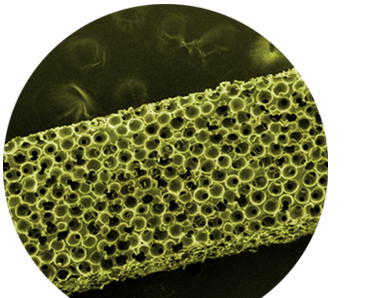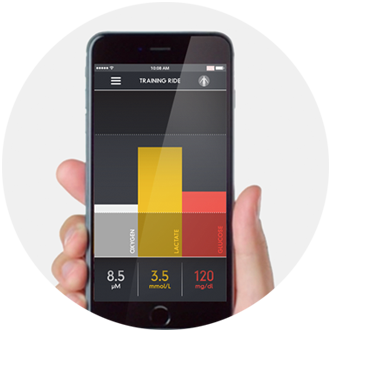Profusa is pioneering tissue-integrating biosensors for continuous monitoring of body chemistries.

Breaking the Biocompatibility Barrier
Profusa’s unique bioengineering approach overcomes the largest hurdle in long-term use of biosensors in the body: the foreign body response. Approximately 5 mm long and 500 microns in diameter, each tiny biosensor is a soft, flexible fiber designed to be biologically compatible with the body’s tissues for continuous monitoring, while overcoming the effects of local inflammation or rejection. (Note: The finger is shown for size comparison.)

Tissue-integrating Scaffold
Providing medical-grade data, the biosensor is made of a porous “smart gel” that mimics the 3D microenvironment of cells. The smart gel is linked to a light-emitting molecule that emits a fluorescent signal in the presence of one or more body chemicals such as oxygen, glucose, lactate, or other biomarker.

Optical Reader
Adhered to the skin’s surface or held by hand, a separate optical reader is used to read the fluorescent signal from the embedded biosensor. The reader sends excitation light through the skin to the biosensor, which then emits fluorescent light proportional to the amount of biochemical measured.

Adaptable Form Factor for Consumer and Medical Applications
Profusa’s technology platform enables the development of biosensor systems with a variety of form factors serving consumer as well as medical applications for continuous monitoring of body chemicals. Results from the optical reader are designed to be transmitted to a smart phone application that allows the user to make actionable decisions, from improving their general health and well-being, to taking their athleticism to another level, or managing a chronic disease such as diabetes or COPD. Data can be shared securely via HIPAA-compliant digital networks with healthcare providers and public health analysts conducting longitudinal studies.
